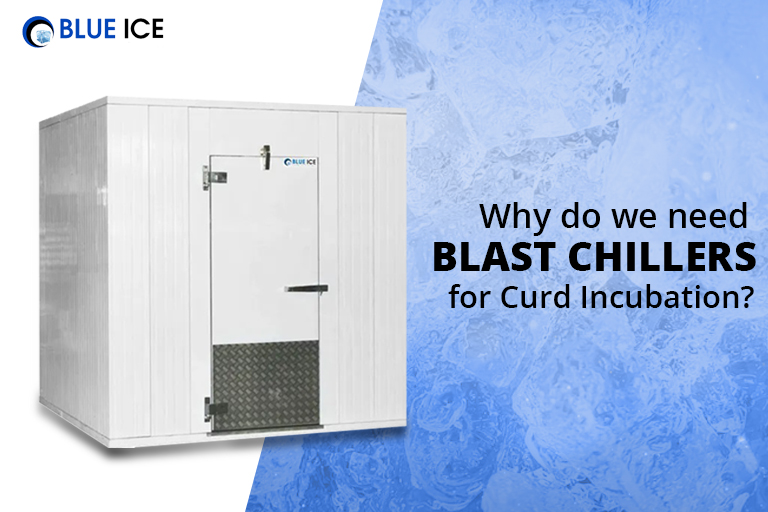
Why do we need Blast Chillers for Curd Incubation?
Blast Chillers: Why do we need Blast Chillers for Curd Incubation?
In dairy processing, the curd is a coagulated mass of milk proteins. The resulting curds are pressed into final products, such as cheese. In order to produce high-quality cheese, it is necessary to keep the temperature of the curd at 30 degrees Celsius or lower during the incubation period.
Curds have different types of bacteria that can develop during incubation. Some bacteria can be harmful and cause food poisoning, while other types of bacteria are beneficial for producing good quality cheese. For this reason, it is essential to control the temperature of the curd during incubation so that only good-quality bacteria grow in it.
The main objective of curd incubation is to reduce the moisture content of the product. This helps in increasing its shelf life by preventing spoilage. It also increases the firmness of the product by increasing its protein content. This makes it easier for processing and handling during further steps like shredding or packaging.
Blast Chillers manufacturers design for them to maintain a constant temperature throughout their entire structure. This helps prevent any change in temperature from occurring within them during operation.
What is a Blast Chiller?
Blast chilling is a method of cooling food rapidly to a low temperature that is relatively safe from bacterial growth. Blast chilling maintains the moisture of the food, which typically is lost during cooling, and ensures minimal shrinkage. Blast chillers are ideal for freezing food rapidly and keeping it fresh for a more extended period. In restaurants, the chefs use blast chillers to keep the menu ready and fresh to use when there is an order.
Importance of Blast Chillers
The importance of a blast chiller in curd manufacturing cannot be undermined as it saves time and money. The following are some of the reasons why you must invest in a blast chiller:
● Slow down the fermentation process: The role played by a blast chiller is very important in curd manufacturing as it slows down the fermentation process so that all bacteria are killed. There is no chance of contamination from other sources. This results in a better quality product with less risk of spoilage or contamination during the transportation or storage period.
● Increase milk yield: A blast chiller can help increase milk yield by about 5% due to its high cooling rate, which prevents lactose from breaking down into glucose and galactose by enzymes in milk.
● Increase life and maintain curd quality - The blast chiller helps in quick cooling so that you can use your curd within a few hours after they are made. This means you do not have to keep them for long periods, increasing the chances of spoilage or degradation. It also increases their shelf life by allowing you to use them within three days instead of waiting until they go bad before using them again.
● Improved Quality Of Product: The main benefit of using this equipment is that it will improve the quality of your product. This means that customers can enjoy better-tasting curd when they consume your products. You will also get more repeat customers who would like to try out different kinds of curds from your store again and again.
Conclusion
Curd incubation time is much faster in a blast compared to conventional chillers. The best way to take advantage of this is to have the proper equipment and know how it works. With the right equipment and testing, Blast Chillers suppliers can help control the curd quality and make better cheese. There are many Blast Chillers Manufacturers in Nepal and India; you can select one per your requirements and budget.
Frequently Asked Questions:
Q1. What is the purpose of a blast chiller?
A. Blast chilling also minimizes loss of moisture that occurs during cooling periods and minimizes shrinkage. Blast chillers are your best choice for rapidly freezing food products for longer term storage.
Q2. What is blast chilling process?
A. Blast chilling is a term used to describe the method of cooling food to a low temperature quickly meaning that it passes through the food danger zone quickly therefore harmful bacteria is not given the opportunity to develop and multiply.
Q3. What's the temperature of a blast chiller?
A. Department of Health Guidelines state that to safely Blast Chill food its temperature must be reduced from +70ºC to +3ºC or below within 90 minutes.
